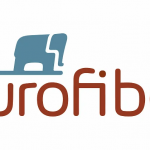Quantum News Briefs: February 12, 2024: IonQ and Seoul National University’s Center for Quantum Information Science Education (CQISE) Enter Agreement to Support Quantum Workforce Development; Penn State Advances in Quantum Tech: Unveiling New Superconductive Materials; Silicon Quantum Computing Announces Simon Segars, former Arm CEO, as its new Chair and welcomes Fiona Pak-Poy as a new Director; “Fusion Breakthrough Could Spark AI and Quantum Computing Boom”

Quantum News Briefs: February 12, 2024:
IonQ and Seoul National University’s Center for Quantum Information Science Education (CQISE) Enter Agreement to Support Quantum Workforce Development
.jpg)
IonQ, a leading force in quantum computing, has announced a Memorandum of Understanding (MoU) with the Center for Quantum Information Science Education at Seoul National University to boost quantum computing education and workforce development in South Korea. This collaboration aims to foster educational programs and joint research initiatives, facilitating an active response to the growing demands of the quantum computing industry. The agreement includes plans for mutual personnel exchange, enhancing bilateral cooperation quality, and developing internships focused on quantum-related activities. Taehyun Kim and Jungsang Kim, representing Seoul National University and IonQ respectively, expressed optimism about the partnership’s potential to advance quantum computing research, education, and contribute to Korea’s emergence as a global leader in quantum technology. This MoU, following a similar agreement with South Korea’s Ministry of Science and ICT, underscores IonQ’s commitment to cultivating global quantum ecosystems through innovative research and technology.
Penn State Advances in Quantum Tech: Unveiling New Superconductive Materials

Researchers at Penn State have created a novel material that combines two magnetic materials to achieve a unique type of superconductivity potentially pivotal for quantum computing’s future. This material, merging a ferromagnet and an antiferromagnet, exhibits all necessary properties for chiral topological superconductivity, which could lead to more durable quantum computers. The study, published in the journal Science, highlights this superconductivity at the materials’ interface as a significant step towards realizing chiral Majorana particles—hypothetical entities anticipated to play a crucial role in quantum computing. This development is seen as a critical advancement towards topological quantum computation, offering a robust platform against the common quantum computing issue of decoherence. The research underscores the potential of combining superconductivity, ferromagnetism, and topological order, marking a promising direction for the exploration of quantum computing materials and the elusive Majorana physics.
Silicon Quantum Computing Announces Simon Segars, former Arm CEO, as its new Chair and welcomes Fiona Pak-Poy as a new Director
![]()
Silicon Quantum Computing (SQC), an Australian quantum computing start-up, has announced significant board appointments, with Simon Segars, former CEO of Arm Holdings, joining as the new Chair effective January 28, 2024, and Fiona Pak-Poy named as the Australian Government’s Shareholder Nominee Board Director. Simon Segars brings extensive semiconductor industry experience, leading Arm Holdings to become the UK’s largest semiconductor IP company and overseen its acquisition by SoftBank Group. Fiona Pak-Poy has a rich background in guiding tech startups and listed companies across various sectors. These appointments come at a critical time for SQC as it advances towards releasing its first commercial processors, with the company’s founder and CEO, Michelle Simmons, expressing excitement about the transformative potential these new board members bring to SQC’s expansion and innovation efforts.
In Other News: Markets Insider article: “Fusion Breakthrough Could Spark AI and Quantum Computing Boom”
![]()
The United States National Ignition Facility (NIF) achieved a significant nuclear fusion reaction on December 5, 2022, marking the first instance of producing more energy than was consumed in the process, a significant milestone now officially confirmed by peer review, highlights a recent Markets Insider article. Published in the APA Physics journal, this validation paves the way for the potential development of nuclear fusion reactors capable of providing near-unlimited energy. This achievement, often equated to a “free lunch” in physics, could revolutionize energy consumption, drastically reduce dependence on carbon-based fuels, and accelerate advancements in energy-intensive fields such as artificial intelligence (AI) and quantum computing. The experiment, utilizing inertial confinement fusion with nearly 200 lasers to superheat hydrogen atoms, sets a foundational platform for future fusion reactors. While practical applications remain on the horizon, this breakthrough has been recognized as a critical step towards overcoming the energy limitations facing next-generation technological advancements, including the development of future AI systems as highlighted by OpenAI CEO Sam Altman.
Kenna Hughes-Castleberry is the Managing Editor at Inside Quantum Technology and the Science Communicator at JILA (a partnership between the University of Colorado Boulder and NIST). Her writing beats include deep tech, quantum computing, and AI. Her work has been featured in National Geographic, Scientific American, Discover Magazine, New Scientist, Ars Technica, and more.





















